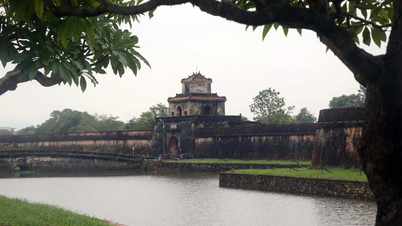1. Which province has the cheapest cost of living in the North?
- Hai Phong0%
- Bac Ninh0%
- Nam Dinh0%
- Lang Son0%
Among the 25 northern provinces and cities, Nam Dinh has the cheapest cost of living, according to the 2023 Spatial Cost of Living Index (SCOLI) report of the General Statistics Office. This index reflects the trend and level of prices of goods and services in localities every year.
Regarding the calculation of this index, Hanoi is taken as the base with 100%. Nam Dinh with the SCOLI index in 2023 equal to 86.35%, is the province with the cheapest living standard in the North and the second cheapest in the country.
According to the General Statistics Office, localities with low living standards nationwide are mostly due to low prices of goods in the groups of food and catering services; clothing, hats and footwear; rental housing; household appliances and equipment; transportation; post and telecommunications; educational services; and entertainment services.
2. This province is located in the economic region with the most expensive living standards in the country?
- Correct0%
- Wrong0%
The Red River Delta region includes 11 provinces and cities: Hanoi, Hai Phong, Hai Duong, Bac Ninh, Vinh Phuc, Hung Yen, Thai Binh, Nam Dinh, Ha Nam, Ninh Binh and Quang Ninh.
According to the SCOLI index, the Red River Delta has been the most expensive region in the country for many consecutive years. In particular, Hanoi leads with the highest price, Quang Ninh ranks 3rd (after Ho Chi Minh City) with a SCOLI index equal to 97.94% of Hanoi; Hai Phong ranks 4th in the country with an index equal to 96.07%...
Located in the Red River Delta, Nam Dinh has the second lowest standard of living in the country, after Ben Tre. Compared to Hanoi, the average price of Nam Dinh's product groups is 73.23% -103.25%.
3. Which place name of this province is printed on the banknotes currently in circulation in our country?
- Co Le Pagoda0%
- Textile factory0%
- Tran Temple0%
- Tran Hung Dao Monument0%
Nam Dinh province is located at the southeastern gateway of the Red River Delta, bordering Thai Binh province to the northeast, Ninh Binh province to the southwest, Ha Nam province to the northwest and the Gulf of Tonkin to the southeast.
Nam Dinh has many famous images, but few people know that the image printed on the back of the 2,000 VND note (first issued on October 20, 1989) is the Nam Dinh Textile Factory.
Since its establishment in the late 19th and early 20th centuries, Nam Dinh Textile has been known as the largest factory in Indochina. In 1924, the number of workers in the factory reached 6,000 people and up to nearly 13,000 workers and employees in 1985. In 1985, it was calculated that on average, every family in Thanh Nam had one person who was a worker in this factory.
4. Nam Dinh province has been merged and split 4 times?
- Correct0%
- Wrong0%
Nam Dinh land has existed since the Hung King period, officially established as an administrative unit as Nam Dinh province since the beginning of the 19th century and has undergone 4 mergers and separations:
In May 1965, Nam Dinh province was merged with Ha Nam province to form Nam Ha province.
In 1975, Nam Ha merged with Ninh Binh province to form Ha Nam Ninh province.
In 1991, Ha Nam Ninh province was divided into two provinces as before, Nam Ha and Ninh Binh.
On November 6, 1996, Nam Ha province was split into two provinces, Nam Dinh and Ha Nam.
Currently, Nam Dinh has 9 district-level administrative units (including 8 districts and Nam Dinh city); 175 commune-level administrative units (including 146 communes, 14 wards and 15 towns); after the arrangement, the units have been operating stably since September 1, 2024.
Source: https://vietnamnet.vn/tinh-nao-co-muc-song-song-re-nhat-mien-bac-du-nam-o-vung-dat-do-nhat-ca-nuoc-2387232.html


![[Photo] General Secretary To Lam holds a brief meeting with Russian President Vladimir Putin](https://vphoto.vietnam.vn/thumb/1200x675/vietnam/resource/IMAGE/2025/5/10/bfaa3ffbc920467893367c80b68984c6)




![[Photo] Prime Minister Pham Minh Chinh chairs a meeting of the Steering Committee for key projects in the transport sector.](https://vphoto.vietnam.vn/thumb/1200x675/vietnam/resource/IMAGE/2025/5/10/0f4a774f29ce4699b015316413a1d09e)





















































































Comment (0)